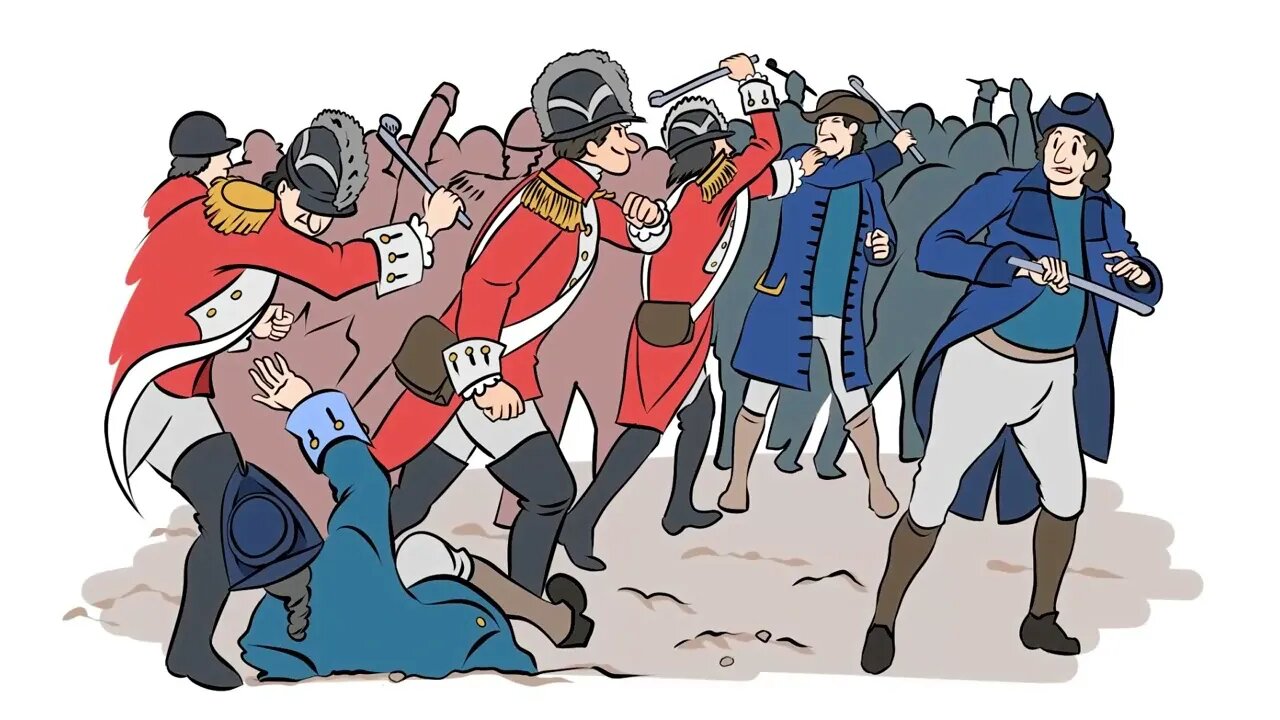Premium Only Content

Standing Armies
In the Declaration of Independence, Thomas Jefferson condemned King George for keeping standing armies in the colonies during times of peace. Writing in the midst of the Revolutionary War, Jefferson understood that militaries were sometimes necessary to defend against foreign invasion—but Britain’s crime was in maintaining a standing army.
A standing army is a perpetual military force consisting of professional, salaried soldiers.
For most of history, standing armies were unique to empires. After the Fall of Rome, Western Europe went centuries without standing armies. In 1776, the British army was less than a century old. After the Seven Years’ War, Britain decided to maintain a military presence in North America, and since the army protected the colonists, they should pay for it.
To Americans, this was essentially a protection racket. Imagine Britain as the mafia, and the colonies as neighborhood businesses. In protection rackets, mobsters promise protection against robbery and vandalism for a fee. But if anybody refuses to pay, the mobsters ransack the store to extort payment from the owner.
This is how colonists saw the British military. Boston was like the business owner who refused to be extorted, so Britain used their military to make an example of city. Occupying soldiers killed civilians, forced their way into private homes, and blocked commerce.
This is the context for James Madison’s statement that “The means of defence against foreign danger, have been always the instruments of tyranny at home.”
Costa Rica learned this lesson in the twentieth century. Upon ousting their military-backed communist regime in 1948, they constitutionally abolished standing armies and have since enjoyed the safest and most politically stable country in Central America.
Yet the United States controls the world’s most powerful military. So what changed?
In 1786, Revolutionary War veteran Daniel Shays led an armed protest against oppressive taxes. The Articles of Confederation left the federal government powerless against the rebellion, which was suppressed by state militias.
Shays’ Rebellion provided the impetus for the constitutional convention. Madison warned that armies maintained “under the pretext of defending” invariably “enslaved the people,” but Federalists were more afraid of insurrection. The new constitution struck a compromise: Congress could raise an army funded for two years.
Hamilton defended the compromise by pointing to the West. He endorsed keeping “a permanent corps in the pay of the government” garrisoned on the “Western frontier.” A standing army provided the tool that made imperialism possible, but it was in the West that the American Empire was born.
______________________________________
Want to learn more?
For more animated content, check out Economics for Beginners at https://BeginEconomics.org.
Check out the latest Mises Wire articles on foreign policy and war: https://mises.org/topics/war-and-foreign-policy
Anatomy of the State by Murray Rothbard is a great mini-book on the true nature of the state: https://mises.org/anatomy
The Betrayal of the American Right by Murray Rothbard focuses on the history of the modern conservative movement, and the role it played in aggressively escalating America's foreign policy in the 20th century: https://mises.org/betrayal
Wall Street, Banks, and American Foreign Policy by Murray Rothbard is a fiery monograph that employs "power elite" analysis to understand the relationship between money, power, and war: https://mises.org/library/wall-street-banks-and-american-foreign-policy-0
A Century of War: Lincoln, Wilson and Roosevelt by John V. Denson is an extensive look at how the twentieth century became the bloodiest in all history: https://mises.org/library/century-war-lincoln-wilson-and-roosevelt-0
A Foreign Policy of Freedom by Ron Paul offers a positive view for an American foreign policy would look like if it stayed true to its founding principles: https://mises.org/library/foreign-policy-freedom
-
 9:49
9:49
Mises Institute
1 month ago $0.05 earnedThe Great Precious Metal Premium Conspiracy | Mark Thornton
2553 -
 6:53
6:53
Rena Malik, M.D.
23 hours ago $0.29 earnedWhy Antidepressants Wreak Havoc on Your Sex Life?! | Urologist Explains How to Boost your Libido
4.53K4 -
 1:00:00
1:00:00
BEK TV
2 days agoMIKE MOTSCHENBACHER ON NORTH DAKOTA POLITICS, TEA PARTY ROOTS, AND THE 2026 ELECTION
9.6K -
 15:31
15:31
Breaking Points
1 day agoIs Trump Planning VENEZUELA Regime Change?
33.1K20 -
 2:06:05
2:06:05
"What Is Money?" Show
2 days agoTrump Family Bitcoin Bet Will Trigger Nation-State FOMO w/ Matt Prusak (CEO American Bitcoin)
13.4K -
 1:04:36
1:04:36
Dialogue works
3 days ago $3.66 earnedMohammad Marandi: Iran Just Gave Israel a FINAL Warning…
16.3K6 -
 9:20
9:20
daniellesmithab
1 day ago3 Bad Laws
23.3K7 -
 9:22
9:22
MattMorseTV
18 hours ago $11.18 earnedINDIA just made a BIG MISTAKE.
65.1K58 -
 12:11
12:11
Nikko Ortiz
17 hours agoCrashout 6 Rumble
15.5K3 -
 22:35
22:35
GritsGG
17 hours agoThe KILO is BACK! The Best AR on Warzone FRIES!
25.7K1